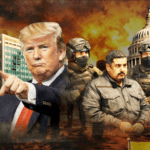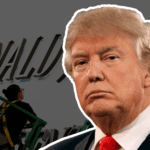Chinese President Xi Jinping’s visit to Moscow on May 8, 2025, was both symbolic and strategic. His attendance at Russia’s Victory Day celebrations commemorating the defeat of Nazi Germany was a highly choreographed show of solidarity with Vladimir Putin, whose war in Ukraine continues to isolate Russia diplomatically and economically. Amid parades and mutual praise, the leaders signed a series of new agreements that reinforced their so-called “comprehensive strategic partnership”.
These agreements included renewed commitments to joint counterterrorism and anti-narcotics operations from 2025 to 2027, expanded energy trade, and declarations promoting a multipolar world order that challenges Western-dominated institutions. But beyond the ceremonies and signatures, a deeper look reveals three critical dimensions shaping the trajectory of the China-Russia relationship.
1. Strategic Distance: Xi Walks a Diplomatic Tightrope
Despite the public warmth between the two leaders, there are signs that President Xi is careful not to appear too aligned with Putin. China has maintained a nuanced position on Russia’s war in Ukraine—refusing to condemn the invasion, while simultaneously calling for respect of sovereignty and territorial integrity. This ambiguity helps Beijing hedge against potential European backlash, particularly as it tries to deepen trade ties with the EU and present itself as a stabilizing global actor, especially in contrast to the unpredictability surrounding a potential second Trump presidency in the U.S, according.
Furthermore, China’s recent overtures to European capitals, including Xi’s diplomatic overtures to Berlin and Paris, suggest that Beijing is keen to preserve its access to Western markets and technology. Standing too close to Putin—an increasingly isolated figure—could undercut these goals.
2. Power Asymmetries: A Not-So-Equal Partnership
While the rhetoric from Moscow speaks of an “equal strategic partnership”, the facts on the ground suggest otherwise. Russia’s economy has been severely weakened by international sanctions and its military overstretched by prolonged conflict in Ukraine. In contrast, China’s global economic and diplomatic clout continues to grow.
This imbalance is evident in key negotiations. While Russia has pushed hard for the Power of Siberia 2 gas pipeline to supply energy to northern China, Beijing has dragged its feet—reportedly to extract more favorable terms and signal its dominant position in the relationship.
Moreover, while Russia increasingly relies on Chinese technology and finance to stabilize its sanctions-hit economy, China retains the flexibility to scale its support up or down depending on the geopolitical climate. In essence, Putin is more dependent on Xi than vice versa.
3. Messaging Washington: No Wedge Will Be Driven
The joint statements from the summit were laced with criticism of Western unilateralism, NATO expansion, and economic coercion—clear signals aimed at the United States. With Washington currently embroiled in debates over the future of its Ukraine policy amid a charged presidential campaign, both Xi and Putin appear eager to seize the moment and present a united front.
There has been speculation that the U.S., under a potential Trump administration, may attempt to split Beijing and Moscow by offering economic incentives or shifting focus toward a China containment strategy. However, Xi’s visit and reaffirmation of ties make it clear that while differences may exist, they will not be easily exploited by external powers.
This display of unity sends a calculated message: that both leaders see value in their shared opposition to what they view as American hegemony, and that China—while selective in its support—will not allow Russia to be isolated entirely.
A Final Note
The Xi-Putin meeting may not have introduced any dramatic new policies, but its implications are significant. It underscores how global alignments are shifting—not necessarily along ideological lines, but along axes of pragmatism, power asymmetry, and shared grievances.
For the West, the challenge will be to understand that while Russia and China may not be perfectly aligned, their strategic cooperation is real, evolving, and likely to endure as long as mutual interests—especially opposition to U.S. dominance—outweigh their differences.















